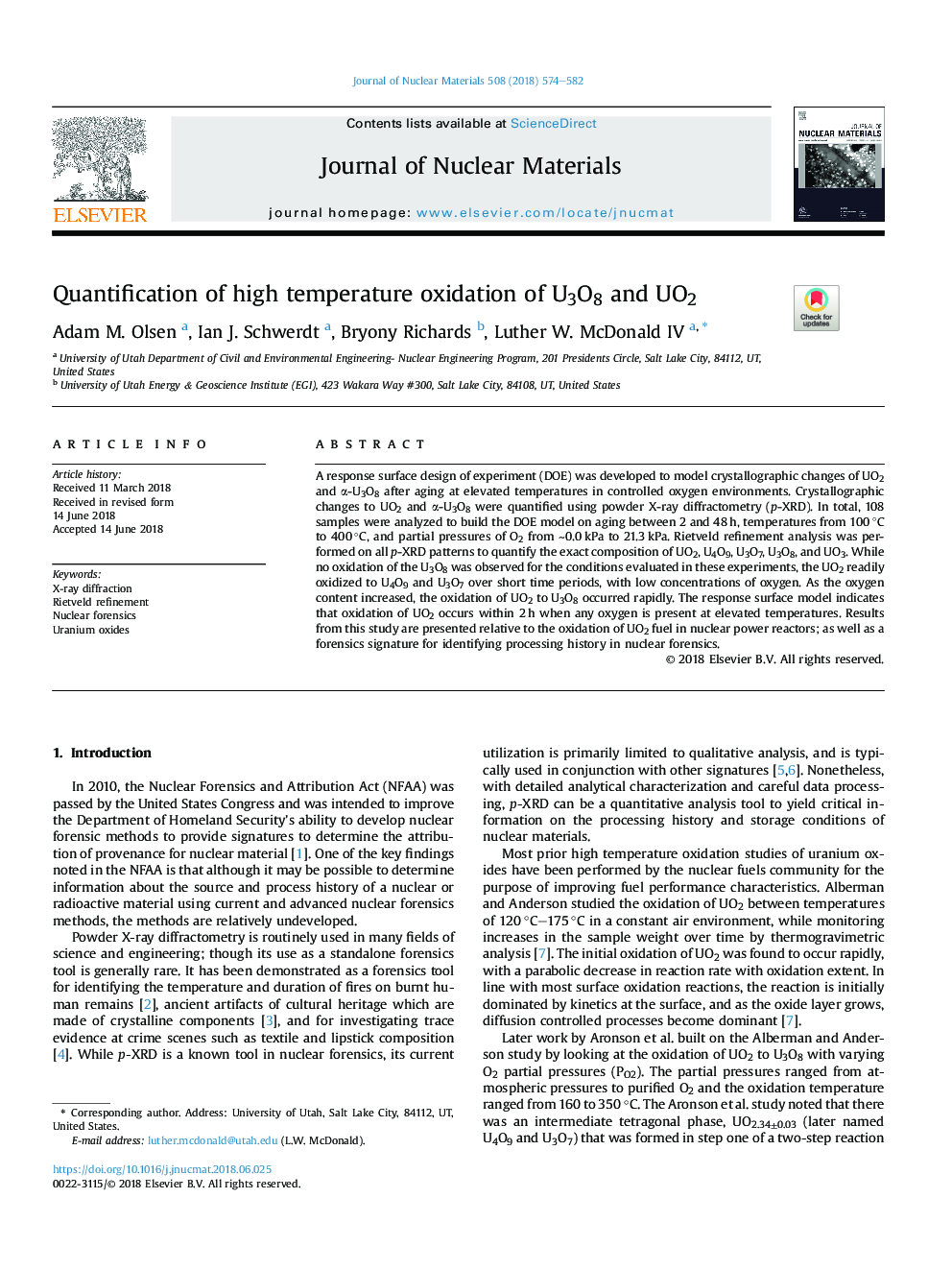| Article ID | Journal | Published Year | Pages | File Type |
|---|---|---|---|---|
| 7963046 | Journal of Nuclear Materials | 2018 | 9 Pages |
Abstract
A response surface design of experiment (DOE) was developed to model crystallographic changes of UO2 and α-U3O8 after aging at elevated temperatures in controlled oxygen environments. Crystallographic changes to UO2 and α-U3O8 were quantified using powder X-ray diffractometry (p-XRD). In total, 108 samples were analyzed to build the DOE model on aging between 2 and 48â¯h, temperatures from 100â¯Â°C to 400â¯Â°C, and partial pressures of O2 from â¼0.0â¯kPa to 21.3â¯kPa. Rietveld refinement analysis was performed on all p-XRD patterns to quantify the exact composition of UO2, U4O9, U3O7, U3O8, and UO3. While no oxidation of the U3O8 was observed for the conditions evaluated in these experiments, the UO2 readily oxidized to U4O9 and U3O7 over short time periods, with low concentrations of oxygen. As the oxygen content increased, the oxidation of UO2 to U3O8 occurred rapidly. The response surface model indicates that oxidation of UO2 occurs within 2â¯h when any oxygen is present at elevated temperatures. Results from this study are presented relative to the oxidation of UO2 fuel in nuclear power reactors; as well as a forensics signature for identifying processing history in nuclear forensics.
Related Topics
Physical Sciences and Engineering
Energy
Nuclear Energy and Engineering
Authors
Adam M. Olsen, Ian J. Schwerdt, Bryony Richards, Luther W. IV,
